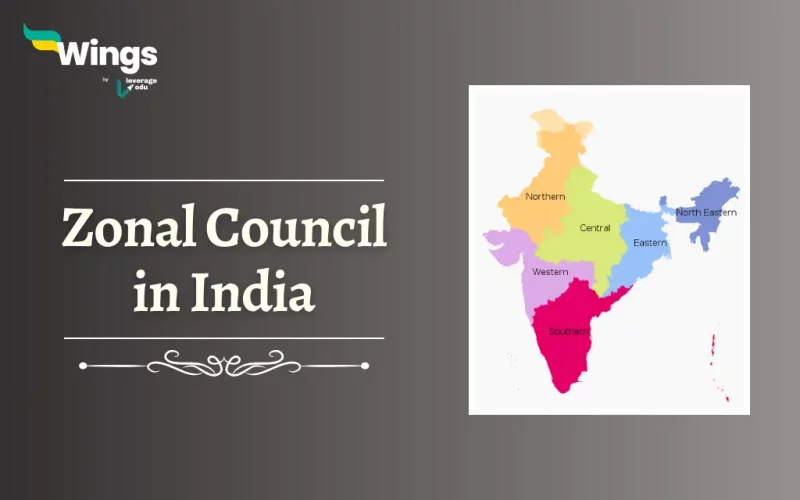The first Prime Minister of India, Jawaharlal Nehru had the idea of the creation of a Zonal Council in the year 1956. The States Reorganization Commission was on the verge of forming and many debates followed along. However, the former presented his idea that when we are already forming states why not go for 4-5 zones in each one of them? These Zones should also have an Advisory Council. Furthermore, these Councils would improve the thinking of ‘Cooperative Working’ amongst all the States. In this blog, you will learn about what is the Zonal Council, how many Zonal Councils in India, the Composition and more.
Also Read: Important Amendment of the Indian Constitution
What is a Zonal Council?
Table of Contents
Zonal Councils are councils for every zone in India for better exchange of views and discussions.
- Through open and honest dialogue and collaboration, the Councils offer a great platform for resolving issues that arise between the Centre and the States as well as between the States.
- Additionally, since Advisory Committees are by nature democratic.
- Moreover, there are enough opportunities for open and honest discussions during sessions of the Zonal council.
Also Read- What is National Integration in India?
Composition of the Council
In addition, a Zonal Council consists of the following:
- Chairman: All the Councils are headed by the Union Home Minister.
- Vice Chairman: Each State’s Chief Minister, who serves a one-year term as Vice-chairman of the Council, is chosen by rotation from among the States that make up that particular Zone.
- Members: The Chief Minister and two additional Ministers are chosen by the Governor of each State. Moreover, two representatives are from the Union Territories that are part of the Zone.
- Advisers: The Chief Secretaries, another officer or Development Commissioner are appointed by each of the States in the Zone. In addition, one representative is chosen by the Planning Commission for each of the Zonal Councils.
Also Read: What is the Difference between the Council of Ministers and Cabinet?
How Many Zonal Councils in India?
Part III of the States Reorganisation Act of 1956 established 5 Zonal Councils following Pandit Nehru’s vision. Furthermore, the following people now make up each of these Councils:
- The Central Zonal Council has the following States:
- Chhattisgarh
- Uttarakhand
- Uttar Pradesh
- Madhya Pradesh
- The Northern Zonal Council is made up of the States:
- Haryana
- Himachal Pradesh
- Jammu & Kashmir
- Punjab
- Rajasthan
- National Capital Territory of Delhi
- Union Territory of Chandigarh
- The Western Zonal Council consists of the following States:
- Goa
- Gujarat
- Maharashtra
- Union Territories of Daman & Diu
- Dadra & Nagar Haveli
- The South Zonal Council are the States:
- Andhra Pradesh
- Karnataka
- Kerala
- Tamil Nadu
- Union Territory of Puducherry
- The Eastern Zonal Council has the following States:
- Bihar
- Jharkhand
- Orissa
- Sikkim
- West Bengal
Note: The seven sisters of North East India are not included in the Zonal Council.
Related Blogs
Lastly, we hope you liked our blog and gained an understanding of a Zonal Council. Moreover, you may even read more blogs and empower yourself with knowledge regarding Civics and Polity!
 One app for all your study abroad needs
One app for all your study abroad needs













